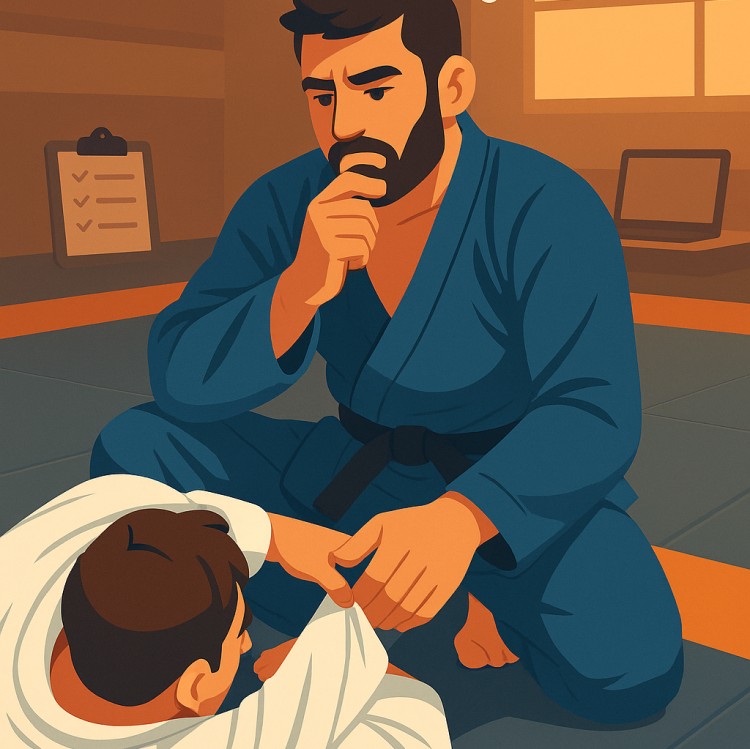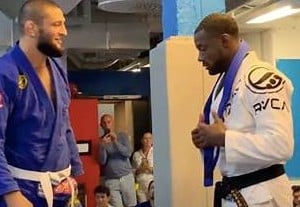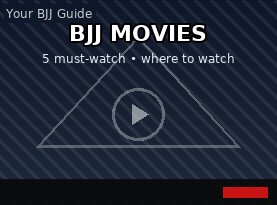At some point in every Brazilian Jiu-Jitsu journey, a student hits a frustrating wall:
“I’ve learned dozens of techniques… but I still get smashed during sparring.”
The issue isn’t your work ethic or attention to detail — it’s the learning model itself.
Jiu-Jitsu isn’t about collecting techniques. It’s about building adaptable skills. And that requires much more than memorizing sequences from instructionals. It requires experiencing problems, making decisions, and learning in the same chaotic environment where you’ll use your skills: under pressure, with resistance, and in real time.
The Problem With Memorizing Moves

Traditional learning in BJJ — and many online instructionals — teach jiu-jitsu like a catalog of “solutions”:
- Technique A for problem X
- Technique B for problem Y
- Step 1, 2, 3… now drill it
While this structure helps instructors organize material, it can mislead learners. In live rolls, you rarely encounter problems that look like textbook scenarios. Opponents resist, timing changes. Angles shift. What worked in drilling often collapses under pressure.
That’s because memorized moves don’t equal adaptable skill. Performance depends on recognition, timing, and decision-making, not just recall.
Learning from Instructionals: The Pros and Cons
The Good:
- High-level instruction from world-class athletes
- Helpful for visual learners and detailed technicians
- Great reference when you want to explore specific positions
The Limitations:
- Often lack live resistance context
- Easy to binge-watch without retention
- Emphasize what to do, not how to perceive or adapt
- May lead to “technique collector” syndrome — knowing a lot, applying little
Instructionals are valuable tools, but they’re like a cookbook: having recipes doesn’t make you a chef. You must train under pressure to develop your instincts and skills.
Ecological Learning: How Humans Naturally Acquire Skill
In contrast, the ecological approach to BJJ views learning as a process of exploration, adaptation, and real-time decision-making. Rather than memorizing techniques, students solve movement problems in live environments — using constraint-led games and goal-based scenarios.
Here’s what ecological training looks like:
- A coach sets a problem (e.g., “pass the guard using underhooks only”)
- Players explore solutions under resistance
- The brain learns by matching perception with action over many reps
This style mirrors how we learn in nature: by doing, failing, adjusting, and refining.
Why This Matters for Your Progress
Memorization might make you feel like you’re learning, and watching instructional videos is certainly enjoyable, but it can create a false sense of mastery. You might “know” 50 techniques but struggle to apply even one under stress.
Ecological learning skips this problem entirely. You’re always learning in the environment that mirrors sparring, so when it’s time to roll or compete, your body and brain already know what to do. Not because you memorized, but because you’ve trained to perceive, react, and adjust.
Final Thoughts
BJJ isn’t a language to memorize — it’s a problem to solve in motion.
The more you treat jiu-jitsu as a living, moving system instead of a static playbook, the faster you’ll improve. Instructionals have their place, but real progress comes when you stop trying to copy and start learning through exploration.
Don’t just collect techniques. Train your decision-making. Trust your instincts. And build the kind of jiu-jitsu that works — not in theory, but in motion.
If you’re interested in trying this approach to training, a great way to start is with five ecological BJJ games that we’ve selected.
Related Reading
- Best Brazilian Jiu Jitsu Instructionals
The top BJJ videos to learn from - Turning Drills into Learning Games
Science behind learning - Beginner Games
Get started with these games




